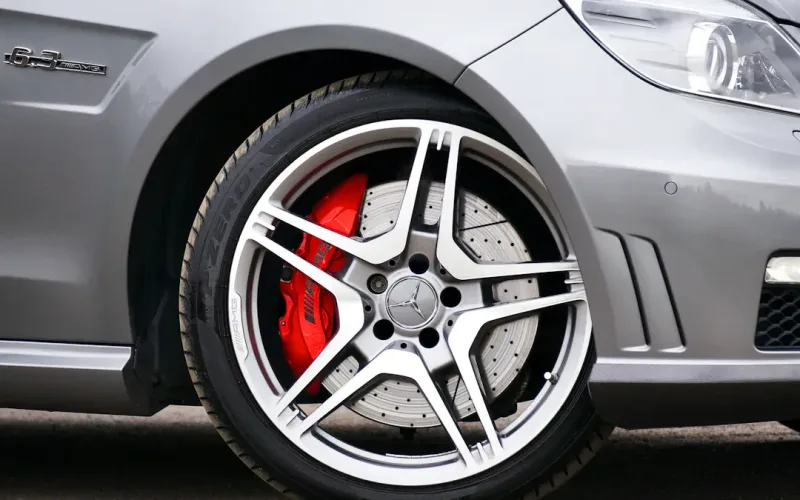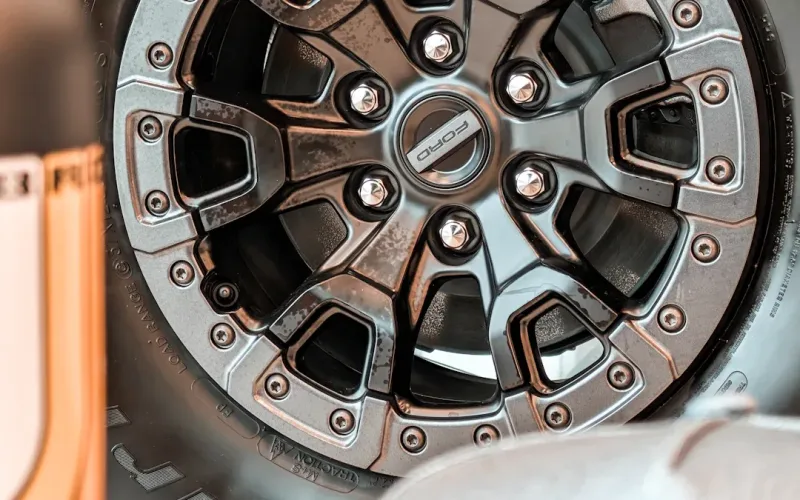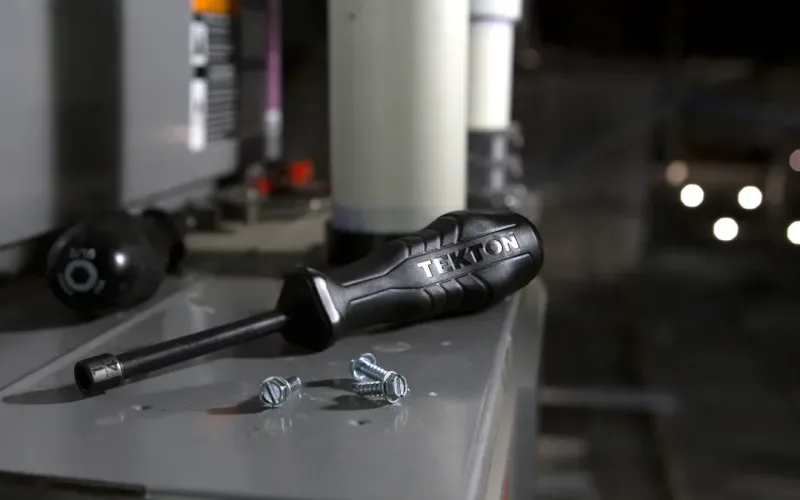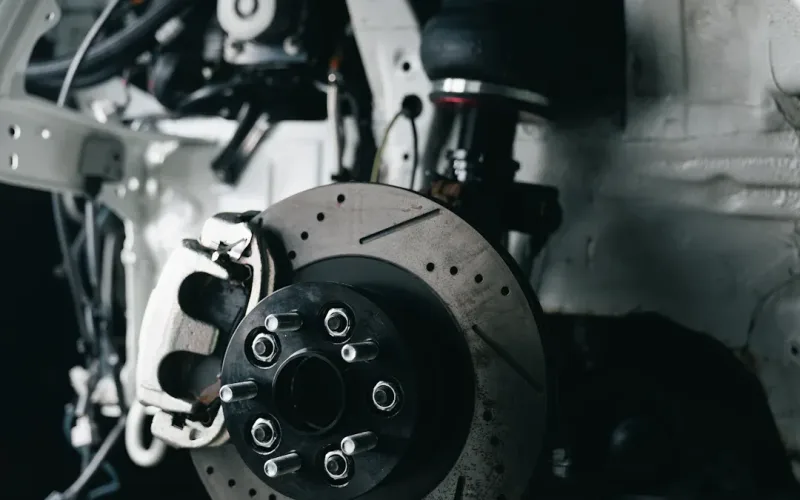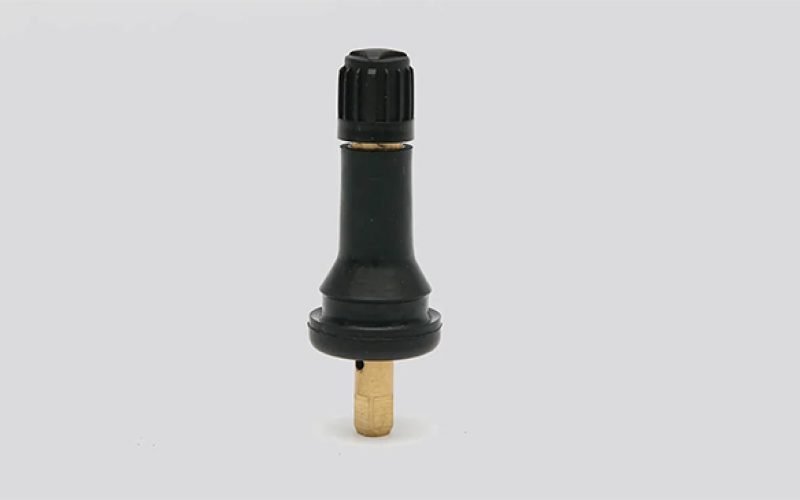

admin1
September 10, 2025
Schrader Car Valve Guide for Modern Vehicles
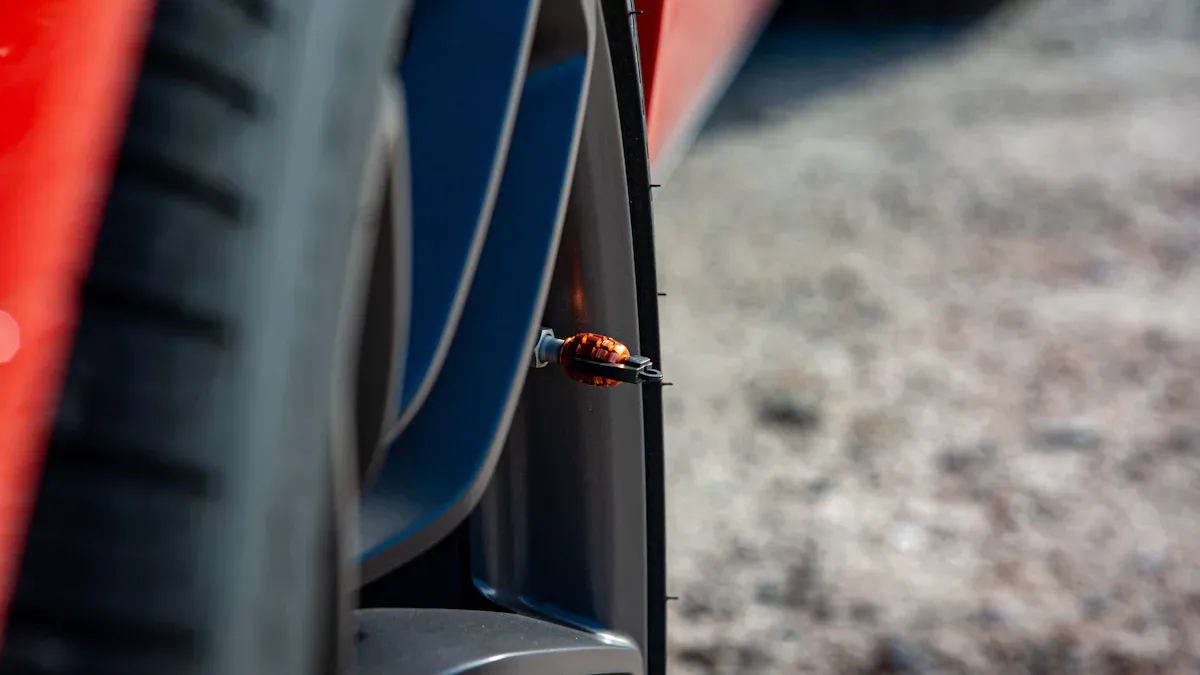
You use a schrader car valve every time you check your tire pressure or add air. This small device controls the air inside your tire and keeps it from leaking. A schrader car valve has a tough, wide design that makes it durable and easy to use. Nearly all modern vehicles rely on the schrader car valve because it works well with standard pumps and holds air securely. The table below shows why schrader valves help keep your vehicle safe:
| Schrader Valve Pros | Description |
|---|---|
| Durable | The strong build resists damage on rough roads. |
| Easy to Inflate | Standard pumps fit perfectly for fast inflation. |
You trust the schrader car valve every day for safe driving.
Schrader Car Valve Main Parts
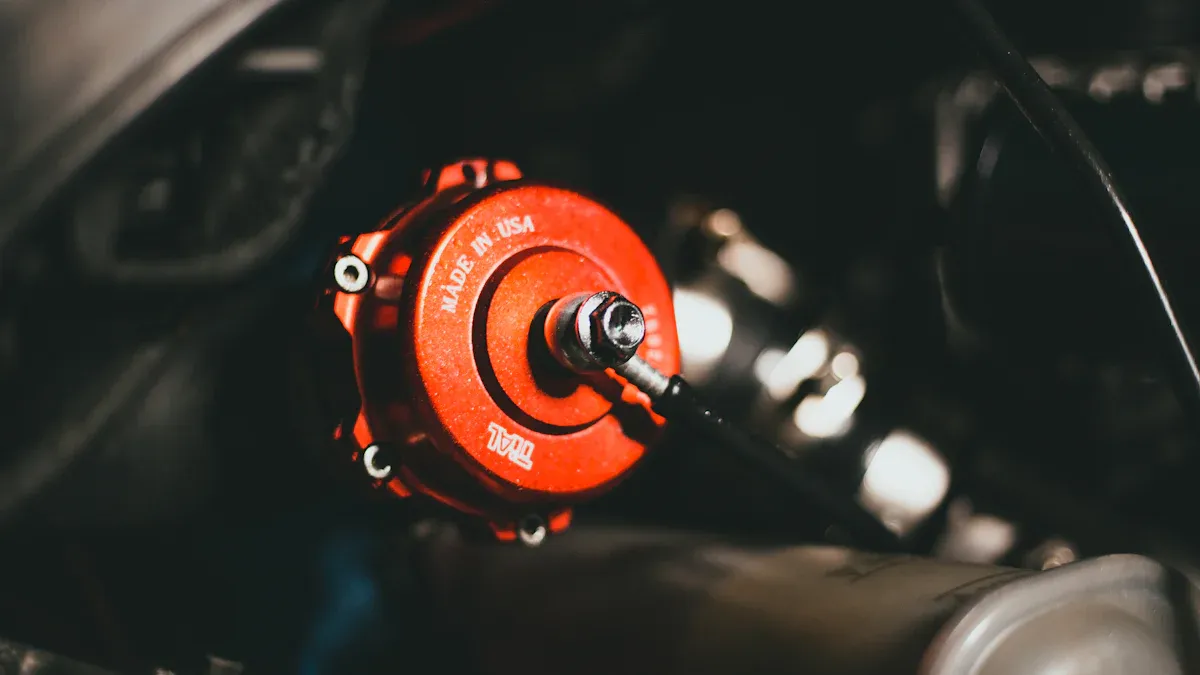
A modern tire valve has several important parts. Each part works together to keep your tires safe and properly inflated. Let’s look at the main components you will find in a typical Schrader valve.
Valve Core
The schrader valve core sits inside the valve and acts as the heart of the system. You can think of it as a tiny gatekeeper. It uses a spring-loaded plunger and a poppet valve mechanism to control air flow. When you press the plunger, the poppet valve opens. This lets air enter the tire. When you release the plunger, the valve core seals tightly, stopping air from escaping. If you need to let air out, you simply press the plunger again. The schrader valve core makes it easy for you to inflate or deflate your tires as needed.
Tip: The schrader valve core is small but mighty. It keeps your tire pressure steady and helps prevent leaks.
Valve Stem
The tire valve stem is the long, metal tube you see sticking out from your wheel. It holds the schrader valve core and other parts in place. The tire valve stem gives you a strong, secure path for air to travel into the tire. When you attach an air hose, the fitting presses down on the pin inside the stem. This action opens the schrader valve core and allows air to flow in. Once you remove the hose, the plunger snaps back and seals the tire. The tire valve stem also protects the inner parts from damage.
Here are the main parts inside the valve stem:
- Metal tube housing: Holds all valve components securely.
- Spring: Closes the valve when not in use.
- Pin: Opens the valve when pressed.
- Gaskets: Seal the valve and allow two-way air flow.
Valve Cap
The valve cap may look simple, but it plays a big role in protecting your tire valve. The cap screws onto the end of the valve stem. Inside the cap, a rubber o-ring creates a tight seal. This seal keeps out dirt, water, and other contaminants. If you lose the cap, moisture or debris can get inside and cause the schrader valve core to stick or leak. Always replace missing caps to keep your tire valve working well.
Note: A clean, tight valve cap helps your schrader valve core last longer and keeps your tires safe.
Rubber Seal
The rubber seal is a small but vital part of your Schrader valve. You find it inside the valve stem, where it forms a tight barrier between the metal parts and the air inside your tire. This seal keeps air from leaking out, even when you drive over bumps or rough roads.
You rely on the rubber seal every time you inflate your tires. When you add air, the seal flexes slightly to let air pass through. Once you finish, the seal snaps back into place. This action blocks air from escaping. The rubber material gives the seal flexibility and strength. It can handle changes in temperature and pressure without cracking or losing shape.
Tip: Always check your valve for signs of wear. A damaged rubber seal can cause slow leaks and lower your tire pressure.
Here are some key facts about the rubber seal in Schrader valves:
- Made from high-quality rubber compounds for durability.
- Designed to resist heat, cold, and chemicals found on roads.
- Helps maintain steady tire pressure for better fuel efficiency and safety.
You might not see the rubber seal, but you notice its effects. If your tire loses air quickly, the seal could be worn or damaged. You can test for leaks by applying soapy water to the valve. If you see bubbles, the seal may need replacement.
A good rubber seal protects your tire from dirt, water, and debris. It also works with the valve core to keep your tire pressure stable. When you replace a valve core, always check the rubber seal. Using quality parts, like those from trusted brands, ensures your tires stay safe and ready for the road.
Note: Regular inspection of your valve’s rubber seal helps prevent unexpected flats and extends the life of your tires.
How a Schrader Valve Works
Air Inflow and Outflow Mechanism
You interact with the schrader valve every time you check or adjust your tire pressure. The valve uses a simple but effective design to control air movement. Inside the valve stem, you find a core that acts as a poppet valve. A spring holds the core closed until you press the pin. This action opens the valve and lets air flow in or out.
- The schrader valve opens when you press the center pin.
- Air enters the tire as the valve core moves against the spring.
- When you stop pressing, the spring pushes the core back, sealing the valve.
- Air can also exit the tire if you press the pin, allowing pressure to move from inside the tire to the atmosphere.
This mechanism gives you control over tire inflation and deflation. You can add air quickly or release it as needed. The valve design keeps air inside when you finish, helping your tires stay at the right pressure.
Tip: Always press the valve pin gently to avoid damaging the core. A smooth action helps maintain the valve’s performance.
Pressure Retention and Spring Action
The schrader valve relies on a strong spring to keep air inside your tire. When you finish inflating, the spring pushes the valve core closed. This action creates a tight seal that holds pressure steady. You do not need to worry about air leaking out unless the valve is damaged or dirty.
The valve’s spring action works like a safety lock. It responds instantly when you remove the air hose or stop pressing the pin. The rubber seal inside the valve helps the spring keep the seal airtight. You get reliable pressure retention, which means your tires stay inflated longer.
Note: A healthy valve spring and seal protect your tire from slow leaks. Regular checks help you spot problems early.
Role in Tire Inflation and Deflation
You use the schrader valve for both tire inflation and deflation. The process is simple and quick. Here is how it works:
For tire inflation:
- Remove the valve cap.
- Attach the air chuck from your pump to the valve stem.
- Inflate the tire to the desired pressure.
- Remove the air chuck.
- Replace the valve cap.
For deflation:
- Remove the valve cap.
- Use a pointed object to press the valve’s center pin.
- Release air until you reach the desired pressure.
- Replace the valve cap.
The schrader valve makes these steps easy. You can adjust your tire pressure anytime. The valve’s design ensures you get accurate results with every use. You keep your tires safe and ready for the road.
Tip: Always replace the valve cap after adjusting pressure. The cap protects the valve from dirt and moisture.
The schrader valve stands out for its reliability and ease of use. You benefit from a design that supports quick inflation and secure pressure retention. Understanding how it works helps you maintain your tires and drive safely.
Importance of Schrader Valves in Modern Vehicles
Common Uses in Cars, Trucks, and Other Vehicles
You see schrader valves on many types of vehicles every day. These valves help you keep your tires inflated and ready for the road. You find them on cars, trucks, motorcycles, and even off-road vehicles. Schrader valves also play a role in air suspension systems and industrial equipment. The table below shows where you use these valves most often:
| Vehicle Type | Common Use |
|---|---|
| Cars | Tire Inflation |
| Trucks | Tire Inflation |
| Motorcycles | Tire Inflation |
| Off-Road Vehicles | Airing up tires |
| Air Suspension Systems | Quick inflation of air bags |
| Industrial Equipment | Pressure maintenance in pneumatics |
You rely on schrader valves because they work well in many situations. The strong design lets you inflate tires quickly and safely. You also use these valves for air suspension, which helps you adjust your ride comfort.
Compatibility with Tire Pressure Monitoring Systems (TPMS)
Modern vehicles use TPMS to help you track tire pressure. Schrader valves work with TPMS sensors to give you accurate readings. The valve core seals the tire and keeps air inside. The sealing cap protects the valve core from dirt and moisture. A grommet creates a tight fit between the valve and the wheel. The nut secures the valve in place. The valve stem connects the schrader valve to the tire, allowing TPMS sensors to monitor pressure.
| Component | Description |
|---|---|
| Valve Core | Essential for sealing the tire and maintaining pressure. |
| Sealing Cap | Protects the valve core from dirt and moisture. |
| Grommet | Ensures a tight fit between the valve and the wheel. |
| Nut | Secures the valve in place. |
| Valve Stem | Connects the schrader valve to the tire, allowing for pressure monitoring. |
You benefit from this compatibility because TPMS helps you avoid driving on underinflated tires. Schrader valves make it easy for sensors to check pressure and alert you if something is wrong.
Safety and Performance Benefits
Schrader valves give you several safety and performance advantages. You can adjust air quickly with high-flow schrader valves. This feature helps you adapt to different terrains. The larger air passage reduces the time you spend inflating or deflating tires. You save time and improve efficiency, especially when off-roading. Schrader valves use high-quality materials that resist damage from debris. You get enhanced durability and reliable performance.
- Rapid air adjustments let you change tire pressure fast.
- Improved efficiency means less waiting during inflation or deflation.
- Enhanced durability protects your valve from harsh conditions.
Tip: You keep your vehicle safe and ready for any road when you use schrader valves. Regular checks help you spot problems early and maintain top performance.
Tire Valve Maintenance and Troubleshooting
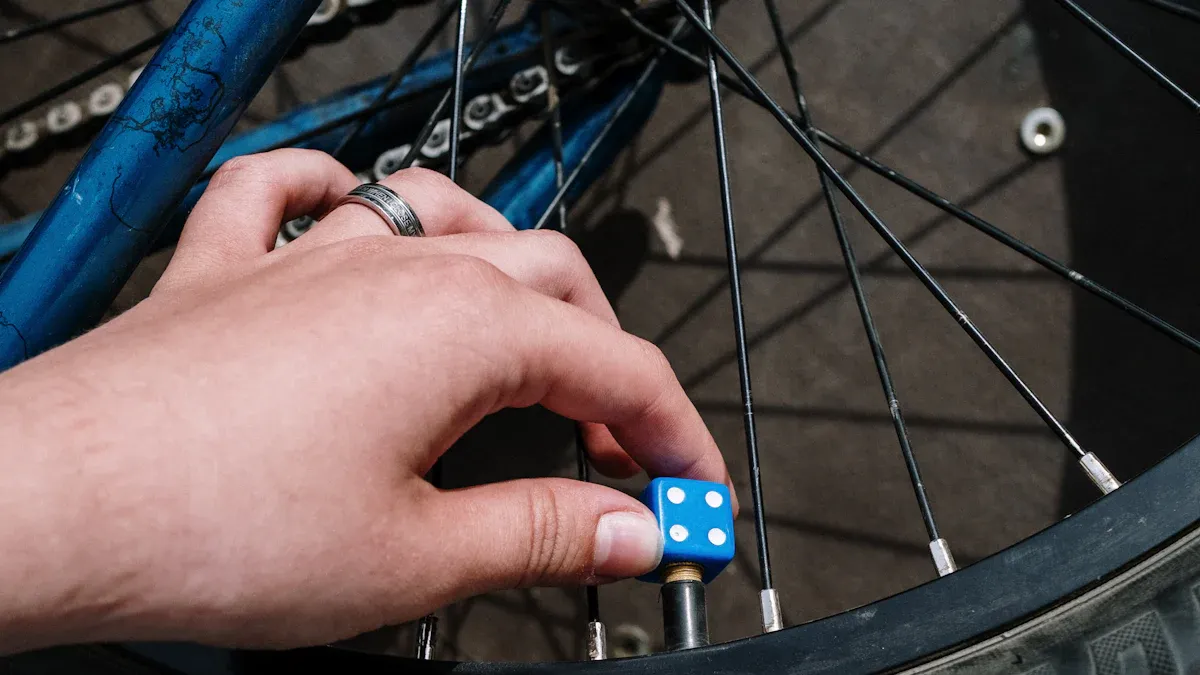
Keeping your valves in top shape helps you drive safely and avoid sudden air loss. You can follow a few simple steps to check, clean, and maintain your schrader valve. This section will guide you through the process.
Checking for Leaks and Damage
You want to make sure your valve holds air and keeps your tire pressure steady. Start by looking for signs of leaks or damage. Here are some steps you can follow:
- Remove the valve cap and inspect the stem for cracks or corrosion.
- Attach a pressure gauge to the valve and check the reading.
- Briefly press the center pin to release a small amount of air. If air escapes uncontrollably, the valve may be faulty.
- Apply soapy water around the valve stem and core. Watch for bubbles, which show a leak.
- If you suspect a slow leak, fill the system with nitrogen and note the pressure. Check the pressure again the next day to see if it drops.
- Use a valve core remover tool to inspect the core for damage or debris.
Tip: Always keep a valve tool in your glove box. You can use it for quick checks or repairs on the road.
Cleaning and Replacing the Valve Core
A clean valve core helps your schrader valve work smoothly. Dirt or debris can cause leaks or make the valve stick. You can clean or replace the core with a few simple tools.
- Use a valve core removal tool that looks like a small screwdriver. This tool gives you better access and control.
- Unscrew the old valve core and inspect it for dirt or damage.
- If you see debris, clean the inside of the valve stem with a small flat head screwdriver or a rod of similar size.
- Quickly install a new valve core to minimize air loss. Keep spare cores handy in case you need them.
- If your tire uses balancing beads, choose filtered valve stems to prevent clogging.
- After replacing the core, check for leaks again with soapy water.
Note: Always replace the valve cap after cleaning or replacing the core. The cap protects the valve from dirt and moisture.
Tips for Schrader Valve Longevity
You can extend the life of your schrader valve by following a few best practices. Regular care keeps your valve working well and helps you avoid problems on the road.
- Inspect your valve and cap during every tire check. Look for cracks, corrosion, or missing parts.
- Make sure the valve cap is always in place. The cap shields the core from dirt and water, which can cause leaks.
- Maintain the correct air pressure in your tire. A properly working schrader valve seals the air inside and supports optimal performance.
- Clean the valve stem if you notice debris or sticky residue. Overinflating the tire and pressing the center pin can help clear out small particles.
- Avoid exposing your valve to extreme temperatures. Heat can soften rubber seals, while cold can make them brittle. High humidity may cause metal parts to corrode.
- Use quality tools like a valve core tool or nitrogen fill tools for maintenance. These tools help you perform quick and accurate repairs.
🛠️ Regular inspections and proper care help you catch problems early and keep your valve in top condition.
Common Problems and Solutions
You may notice issues with your valve from time to time. These problems can affect your tire pressure and safety. Knowing what to look for helps you fix issues quickly. Here are some common problems you might face with your schrader valve and how you can solve them.
1. Air Leaks
Air leaks are the most frequent problem you will encounter. You may hear a hissing sound or see your tire pressure drop. Dirt, dust, or a worn rubber seal can cause leaks.
How to check and fix:
- Remove the valve cap and apply soapy water to the valve stem.
- Watch for bubbles. Bubbles mean air is escaping.
- Tighten the valve core with a valve core tool if it feels loose.
- Replace the valve core if tightening does not stop the leak.
- Always put the valve cap back on to keep dirt out.
Tip: A missing or cracked valve cap can let in water and dirt. Always use a good cap to protect your valve.
2. Sticking or Jammed Valve Core
Sometimes, the valve core gets stuck. You may find it hard to inflate or deflate your tire. This can happen if debris gets inside the valve or if the core rusts.
What you can do:
- Press the center pin gently to see if it moves.
- If it sticks, remove the core with a valve core tool.
- Clean the inside of the valve stem with a cotton swab.
- Install a new valve core if cleaning does not help.
If you ride in wet or muddy areas, check your valve more often. Moisture can cause rust and sticking.
3. Broken or Damaged Valve Stem
A bent or cracked valve stem can cause slow leaks. You might see the stem wobble or notice cracks near the base.
Steps to solve:
- Inspect the valve stem for visible damage.
- If you see cracks or bends, replace the entire valve.
- Use a quality replacement from a trusted brand to ensure a good seal.
| Problem | What to Look For | Solution |
|---|---|---|
| Bent valve stem | Wobbling or cracks | Replace the valve stem |
| Cracked rubber seal | Air loss, visible wear | Replace the rubber seal |
| Loose valve core | Hissing sound, leaks | Tighten or replace the core |
4. Valve Core Corrosion
Corrosion can build up inside the valve, especially if you drive in areas with road salt or high humidity. Corroded cores do not seal well and may cause leaks.
How to handle corrosion:
- Remove the valve core and inspect for rust or greenish buildup.
- Clean the inside of the valve stem with a small brush.
- Replace the core with a new, corrosion-resistant one.
Note: Using a valve cap helps prevent moisture from entering and causing corrosion.
5. Valve Not Compatible with TPMS
Some vehicles use Tire Pressure Monitoring Systems (TPMS). Not all valves work with these sensors. If you install the wrong valve, your TPMS may not read pressure correctly.
What you should do:
- Check your vehicle manual for the correct valve type.
- Use a valve designed for TPMS compatibility.
- If you change your valve, make sure the new one fits your TPMS sensor.
6. Valve Cap Loss
Losing the valve cap may seem minor, but it can lead to bigger problems. Without a cap, dirt and water can enter the valve and cause leaks or sticking.
Solution:
- Always replace missing caps right away.
- Keep spare valve caps in your glove box for emergencies.
🛡️ A simple cap can save you from costly repairs and keep your schrader valve working well.
7. Over-Tightening the Valve Core
You may think a tighter valve core means a better seal. Over-tightening can actually damage the threads or the rubber seal, causing leaks.
How to avoid this:
- Use a valve core tool and turn the core until it feels snug.
- Do not force it. Stop when you feel resistance.
8. Valve Clogging
If you use tire sealants or ride in dusty areas, your valve can clog. This makes it hard to inflate or deflate your tire.
What to do:
- Remove the valve core and clean the inside of the stem.
- Use filtered valve cores if you use sealants often.
Regular cleaning keeps your valve clear and working smoothly.
Quick Reference Table
| Problem | Quick Fix |
|---|---|
| Air leak | Tighten or replace valve core |
| Sticking core | Clean or replace core |
| Damaged stem | Replace valve stem |
| Corrosion | Clean or replace core |
| Lost cap | Replace with new cap |
| Over-tightening | Tighten core gently |
| Clogging | Clean stem and use filtered core |
You can prevent most valve problems with regular checks and simple maintenance. Always use quality parts and tools. If you notice a problem, act quickly to keep your tires safe and your vehicle running smoothly.
You depend on Schrader valves to keep your vehicle safe and your tire performing well. Regularly check each valve for leaks, make sure the cap fits tightly, and replace any faulty parts right away. Clean and inspect your valves often to prevent dirt and corrosion. New technology, like smart sensors, helps you spot problems early. Choose quality products from trusted brands such as Fortune to support long-lasting tire health and reliable driving.
FAQ
How often should you check your Schrader valve for leaks?
You should check your Schrader valve every time you check tire pressure. Look for leaks monthly or before long trips. Use soapy water to spot bubbles around the valve. Early checks help you avoid sudden air loss and keep your tires safe.
Can you replace a Schrader valve core yourself?
Yes, you can replace a Schrader valve core with a valve core tool. Remove the old core, then screw in a new one. Always use a quality replacement. This quick fix helps stop leaks and keeps your tire pressure steady.
What happens if you lose your valve cap?
Losing your valve cap lets dirt and water enter the valve. This can cause leaks or make the core stick. Always replace missing caps right away. Keep spare caps in your glove box for emergencies.
Are Schrader valves compatible with all tire pressure gauges?
Most tire pressure gauges fit Schrader valves. You can use standard gauges at gas stations or at home. Always press the gauge firmly onto the valve for an accurate reading.
Why do modern vehicles use Schrader valves?
Modern vehicles use Schrader valves because they are strong, easy to use, and work with standard pumps. These valves also support tire pressure monitoring systems (TPMS). You get reliable performance and better safety for your vehicle.

